Think Costa Rica, think volcanoes, 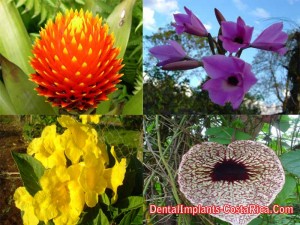
friendly Ticos, verdant forests covered with a cloudy haze, lots of exotic creatures, zip-lining— and more zip-lining! The country is a treasure trove of nature’s gems and manmade adventure jewels.
You would already be gaining a lot out of your dental vacation in Costa Rica. And you can gain a little more and give your “vacation” more meaning by making a wiggle-room for the following Costa Rican attractions:
- San Jose
- Arenal Volcano
- Irazu Volcano National Park
- Tortuguero National Park
- Manuel Antonio National Park
- Corcovado National Park
- Monteverde
- Quepos
- Tamarindo Beach
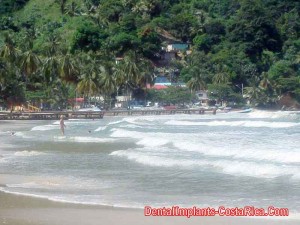 Looking for a little bit of fun having had your dental implants or smile makeover in Costa Rica? Why don’t you get out of your hotel room and explore the Costa Rican capital.
Looking for a little bit of fun having had your dental implants or smile makeover in Costa Rica? Why don’t you get out of your hotel room and explore the Costa Rican capital.
San Jose offers unique travel experiences with its myriad museums, cathedrals, parks and gardens.
- Getting there: The San Jose International Airport (Code: SJO) is just 20 minutes from the heart of the city.
- Best time to visit: The dry season, which runs from December till April.
- Activities: Visit the National Theatre of Costa Rica, Parque Nacional, National Museum, Jade Museum, the Metropolitan Church and a host of other places. Read more on the tourist attractions of San Jose recommended for dental tourists here.
- Climate: The rainy seasons runs from April to December. Average temperatures here hover around 70 to 80°F (21 to 27°C). It can get a little chilly in the nights.
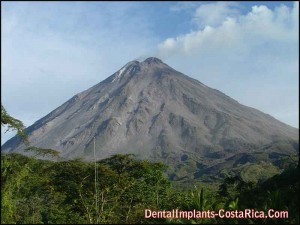 Often cited as one of the ten most active volcanoes of the world, the Arenal offers fantastic views of Costa Rica’s diverse flora. A manmade lake which abuts the volcano is considered one of the world’s finest windsurfing sites.
Often cited as one of the ten most active volcanoes of the world, the Arenal offers fantastic views of Costa Rica’s diverse flora. A manmade lake which abuts the volcano is considered one of the world’s finest windsurfing sites.
One can enjoy kayaking, fishing, bird-watching, horse-riding and a host of other recreational activities here. The Arenal is about 80 miles (130 km) from the San Jose airport.
- Getting there: You can take a public bus from San Jose or opt for private shuttle. Nature Air operates daily Arenal Volcano flights from San Jose and back.
- Best time to visit: As the region is lashed by rains throughout the year, there isn’t any best time of the year to visit. However, to get a clear view of the volcano, about 5:30 in the morning is a good time.
- Tour duration: It takes about 6 hours to complete a hike to the volcano and a visit to the one of the springs close to it. Some of the popular springs in the region are Tabacon Hot Springs, Los Perdidos Hot Springs, and Baldi Hot Springs.
- Permit: You would need a permit for visiting the park at night.
- Park timings: The Arenal Volcano National Park is open from 8 a.m. to 4 p.m.
- Entrance fee: $10
- Things to do: Canopy tour, rafting, waterfall rapelling, hiking, mountain biking, horse-riding.
- Climate: The Arenal has extremely unpredictable weather. Make sure you get the latest weather updates before you leave for the volcano.
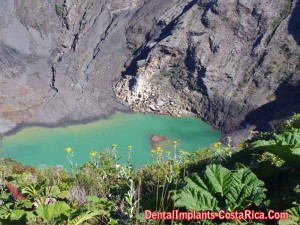 The Irazu is an active volcano (though the last time it erupted was way back in 1963) located very close to the city of Cartago. The summit of the volcano is home to several crater lakes, the most famous of which is the green colored Diego de la Haya.
The Irazu is an active volcano (though the last time it erupted was way back in 1963) located very close to the city of Cartago. The summit of the volcano is home to several crater lakes, the most famous of which is the green colored Diego de la Haya.
You can take up the 1 km (about half a mile) long hiking trail from the main crater to the Crater Lake. Also keep your eyes open to catch a glimpse of exotic wildlife such as sooty-capped bush tanager, volcano hummingbird, woodpeckers and sooted robin.
- Getting there: The volcano park is about 31 miles (50 km) from San Jose. There are a number of buses that leave for the national park. Alternatively, you can opt for private shuttle for about $35 (this would include waiting time of one hour).
- Entry fees: $10
- Timings: 8:00 a.m. to 3:30 p.m.
- Best time to visit: In the morning, before the dense clouds cover the volcano. As the weather conditions here can be substantially different from those in San Jose, make sure you check the weather updates before leaving.
- Lodging: There are no provisions for lodging within the volcano national park. Camping is not allowed inside the park.
- Duration: You can take a day trip from San Jose to the volcano.
- Clothing: Make sure you carry warm clothes with you as it can get quite chilly with average temperatures hovering around 450 F (70 C).
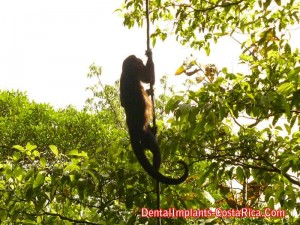 Want to enjoy the amazing spectacle of a thousand marine turtles coming ashore to lay eggs? Then visit the Tortuguero National Park to get firsthand experience.
Want to enjoy the amazing spectacle of a thousand marine turtles coming ashore to lay eggs? Then visit the Tortuguero National Park to get firsthand experience.
And this is just one of the amazing offerings of the park. Its varied habitat systems of beaches, lagoons, mangroves and rainforests offer refuge to a wide variety of flora and fauna. You can also explore the jungle through its extensive water canal system.
- Getting there:
- It is 90 miles from San Jose. You can reach there only by air or water.
- There are daily flights between San Jose (Tobías Bolaños International Airport) and Tortuguero operated by Nature Air.
- You can also take a bus to La Povena, via. Cariari, and then take a boat ride to Tortuguero.
- Best time to visit: The region receives rainfall for most part of the year. Hence, the best time to visit would coincide with the turtle nesting season.
- Turtle Nesting Season: Green turtles nest along the park’s beaches from mid-July to mid-October.
- Park timings: 8 a.m. to 4 p.m.
- Park tour duration: A two-day stay is recommended
- Park admission fees: $10
- Lodging: There are a few lodges in the village of Tortuguero. Camping inside the park is not allowed. The only places you can camp are at the administration headquarters located to the north of the village or the Ranger Station located towards the south of the village.
- Climate: Tortuguero is one of the rainiest regions of Costa Rica. We’ve already mentioned that it rains here for most time of the year. There are showery spells in afternoons even in the dry season.
- Things to do: Turtle and boat tours, hike through the jungle trails, visit the Sea Turtle Museum, explore the village by the park, and lounge on the beach.
It is a tiny national park well known for its rich biodiversity and beautiful beaches. Located just 132 km from San Jose, Manuel Antonio National Park offers hiking junkies with impressive landscapes to traverse through. Additionally, the beaches located by the park offer fantastic views of dolphins and are a magnet for swimmers and surfers.
- Getting there:
- Takes about 3.5 hours by car and 4 hours by bus from San Jose.
- Alternatively, you can take a 30 minute-flight from San Jose to Quepos (which is just 15 minutes’ drive from the park).
- Best time to visit: Only 600-800 people at a time are allowed inside the park. To avoid waiting, it is recommended that you reach by 7 a.m.
- Animal spotting: The ideal time to spot animals is early morning.
- Park accommodation: Camping is not allowed in the park. Hence, a number of hotels and lodges have sprung up in the periphery of the park.
- Park timings: Park is open from 7 a.m. to 4 p.m. and is closed on Mondays.
- Park admission fees: $10
- Park tour duration: 4 to 7 days is recommended in Manuel Antonio. Spend a couple of days exploring the park, lounge on the beautiful beaches for about a day and the rest of the time can be spent in horse-riding, white-water rafting, kayaking and taking boat tours through the mangrove. Alternatively, you can have a day trip of the national park.
- Climate: It is humid for most part of the year. The dry season runs from December to April. The rainy season lasts from May to November. September and October are the wettest months of the year. The trail paths get extremely muddy during the rainy season.
- Things to do: Hiking, surfing, swimming.
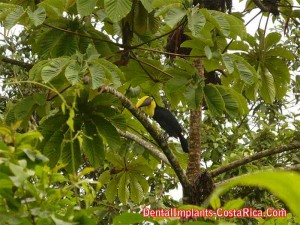 If you are an eco-tourist who was smart enough to travel to Costa Rica to get his teeth fixed and quench his thirst for nature, then Corcovado National Park, with its diverse flora and fauna second to none in the world, would certainly make your jaws drop.
If you are an eco-tourist who was smart enough to travel to Costa Rica to get his teeth fixed and quench his thirst for nature, then Corcovado National Park, with its diverse flora and fauna second to none in the world, would certainly make your jaws drop.
The park is also famous for the La Llorona Waterfall (Catarata La Llorona). As there are no paved roads in the park, the only way to traverse through it is hiking.
Some of the popular trails that run through the park are:
- 3.5 km hike from Carate to La Leona (the path runs along the beach)
- 16 km hike from La Leona to La Sirena (offers nice view of the beach)
- 20 km hike from Los Patos to La Sirena (trail runs through rainforest)
- Getting there:
- It takes about 10 hours by road from San Jose to get there.
- The nearest township, Puerto Jimenez, is just a couple of hours from entrances to the park.
- You can also take a 50-minute domestic flight from Sansa to Puerto Jimenez or Drake
- Best time to visit: January to April, when it rains less than the rest of the year
- Entry fees: $10 per day
- Lodging: Dorm-style lodging is available at the Sirena station. There are camping options too. However, the number of persons allowed to camp in each ranger station is restricted. Hence, make prior reservations. Camping charges are about $4 per day. Bunk beds come for an extra charge.
- Reservation: You need to make a reservation of at least one month in advance with ACOSA (Area de Conservacion de OSA) situated in Puerto Jimenez either through mail, fax or, phone to gain entry into the park. You will also have to make prior reservations for meals through ACOSA.
- Climate: The dry season runs from mid-December to mid-April. The period mid-April to mid-December marks the wet season.
- Number of days: About 3 days
- Things to do: Wildlife watching, camping, canoeing, hiking, snorkeling and scuba diving.
Monteverde is a nature’s paradise just 4-hours’ drive from San Jose. The Monteverde Cloud Forest Reserve, a private protected area, is one of the crowning glories of nature bestowed on Costa Rica.
Besides marveling at nature at its resplendent best, visitors can enjoy hiking and zip-lining and canopy tours. The highlight of the reserve is its 13 km (8 miles) long network of trails.
- Getting there:
- You can either take a bus or opt for private shuttle from San Jose.
- It will take about 3 hours to get there from Liberia.
- You can also get there by road from La Fortuna, Arenal in about 8 hours.
- Best time to spot the animal life: Early mornings from January to September
- Entry Fees: $18 for foreigners
- Timings: 7:00 am. to 4:00 pm
- Lodging: You can opt for private or shared rooms at La Casona, the reserve hostel. You need to make prior reservations through mail.
- Tour duration: At least a 2-night stay is recommended
- Things to do: Take canopy tours, walk on suspension bridges, take a taxi boat ride from Monteverde to Arenal, visit the hummingbird gallery and butterfly garden, horse-riding and a lot more.
- Climate: Monteverde experiences humid and windy weather throughout the year. Annual average temperature is about 18°C (64°F).
En-route to Monteverde, you can break journey at the tiny touristy hub of Quepos. With its vibrant nightlife and pulsating clubs and pubs, it is a throbbing entry point to Monteverde located just 7 miles away.
- Getting there:
- It will take around 3.5 to 4.5 hours to reach Quepos from San Jose by bus.
- Buses for Manuel Antonio leave every 30 minutes.
- Best time to visit: During the dry weather which runs from January to April.
- Lodging: Quepos offers much cheaper lodging options than Manuel Antonio. Make sure you make prior reservations during the on-season weekends running from December to March and holidays such as Christmas and New Year’s.
- Number of days: You can spend a night here before you leave for the Manuel Antonio Park.
- Climate: The town experiences pleasant weather throughout the year, with annual temperatures staying within the range of 20°C (68.0°F) and 30°C (86.0°F).
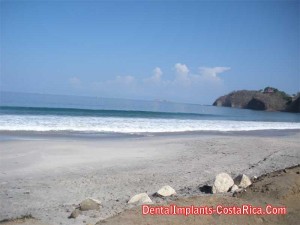 The pristine beaches of Tamarindo, located about 5-6 hours from San Jose, offer visitors plenty of surfing and eco-tourism opportunities. Surfing breaks at Pico Pequeño and El Estero are considered advanced level, while the rest of the breaks at Tamarindo’s beaches can be tried by beginners too.
The pristine beaches of Tamarindo, located about 5-6 hours from San Jose, offer visitors plenty of surfing and eco-tourism opportunities. Surfing breaks at Pico Pequeño and El Estero are considered advanced level, while the rest of the breaks at Tamarindo’s beaches can be tried by beginners too.
One can also witness the leatherback turtles coming ashore and laying eggs at the Playa Grande beach from November to April.
- Getting there:
- A bus ride from San Jose can take you about 6-7 hours.
- Alternatively, you can fly down to the Tamarindo airport from either Liberia or San Jose (flight time 1-1 ½ hours and 45 minutes, respectively).
- Best time to visit: December to April
- Climate: It experiences dry, tropical climate throughout the year. The rainy season runs from May to October, when it might rain briefly in the afternoons.
- Activities: Fishing, surging, sailing, golfing, boat rides, spas, lounging on beaches, etc.
Submit the free quote-request form on the right for more information on dental holiday in Costa Rica.

